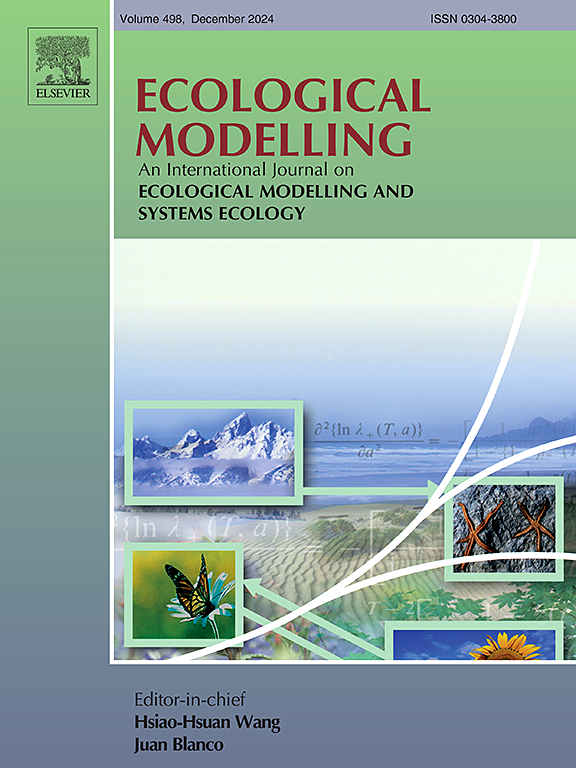Parameter sensitivity and transferability for simulating ET and GPP of Dryland ecosystems across a climate gradient
IF 2.6
3区 环境科学与生态学
Q2 ECOLOGY
引用次数: 0
Abstract
Ecohydrology models are essential tools for projecting ecosystem shifts and quantifying water and carbon fluxes across ecosystems. Parameter uncertainty limits our ability to simulate ecosystem processes. We evaluated sensitivity of parameters in the widely used Farquhar and Ball-Barry algorithms for simulating evapotranspiration (ET) and gross primary productivity (GPP) for three sagebrush ecosystems across an elevation/climate gradient within the Reynolds Creek Critical Zone Observatory in southwestern Idaho, USA. This gradient spanned annual precipitation rates of 292 to 800 mm and GPP from 420 to 849 gC m−2. We used a Monte-Carlo approach of 10,000 to 20,000 model runs to assess the distribution of optimal parameter values for each site. Distributions of best-case values for sagebrush parameters controlling carbon uptake were similar for the Wyoming big sagebrush and mountain big sagebrush sites but differed for the low sagebrush site. Differences in sagebrush transpiration parameters were consistent with soil water regimes for these different species and subspecies. Parameter values for the herbaceous understory showed less similarity between sites and years, which was attributed to the varying composition of grasses and forbs. Peak seasonal GPP was replicated by the model, with understory vegetation contributing up to 80 % of peak GPP. R2 values for simulated GPP ranged from 0.78 to 0.90 for the optimization period and 0.61 to 0.89 for the validation period. A composite parameter set for each site obtained by combining parameter values whose best-case distributions did not significantly differ, resulted in no meaningful difference in simulations. This study reveals the extent to which parameters can be transferred across ecosystems and years, thereby reducing parameter uncertainty which is a critical step forward in assessing future trajectories of ecosystems and carbon fluxes.

求助全文
约1分钟内获得全文
求助全文
来源期刊

Ecological Modelling
环境科学-生态学
CiteScore
5.60
自引率
6.50%
发文量
259
审稿时长
69 days
期刊介绍:
The journal is concerned with the use of mathematical models and systems analysis for the description of ecological processes and for the sustainable management of resources. Human activity and well-being are dependent on and integrated with the functioning of ecosystems and the services they provide. We aim to understand these basic ecosystem functions using mathematical and conceptual modelling, systems analysis, thermodynamics, computer simulations, and ecological theory. This leads to a preference for process-based models embedded in theory with explicit causative agents as opposed to strictly statistical or correlative descriptions. These modelling methods can be applied to a wide spectrum of issues ranging from basic ecology to human ecology to socio-ecological systems. The journal welcomes research articles, short communications, review articles, letters to the editor, book reviews, and other communications. The journal also supports the activities of the [International Society of Ecological Modelling (ISEM)](http://www.isemna.org/).
 求助内容:
求助内容: 应助结果提醒方式:
应助结果提醒方式:


